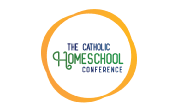Homeschooling, Primary Sources, and History: A Classical Approach
Ditch the Textbook? Rediscovering History Through Primary Sources
Prior to the modern age and the introduction of textbooks, it was common for students to learn history by reading primary sources. Not only was historical study based on primary sources common, but it was inconceivable that it should be conducted any other way. It was simply taken for granted that the best way to learn about an epoch was to read the writings of the people who lived through that epoch.
Throughout my teaching career at Homeschool Connections, I have consistently incorporated primary source studies into my history courses. Sometimes students enjoy it. And, sometimes it makes them cry, but they always learn something! In this article, I will discuss the value of utilizing primary sources in historical studies.
What is a Primary Source?
A primary source is an original document that was produced during the time under study. It was written by someone who was actually present at the time of the events it describes. The Travels of Marco Polo is a great example. Marco Polo himself dictated them about places and events with which he was personally involved. The Diary of Anne Frank or a reporter’s first-hand account of the Battle of Gettysburg would be other examples. Primary sources are the raw materials of history. These are contrasted with secondary sources, which are commentaries or expositions on history written later by authors who were not there. Textbooks are classic examples of secondary sources, as well as anything else written after the fact.
Until the modern era, primary sources were the cornerstone of historical study. Students learned history by immersing themselves in the writings of those who actually lived through the periods in question. Clergy, philosophers, politicians—every person of note studied history in this manner. In this way, people truly built a connection with the lives and ideals of the past. It was simply the way people learned history.
The Influence of Positivism and the Rise of the Textbook
The Rise of Positivism and the “Science” of History
Everything changed with the dawning of the modern age and the emergence of history as a distinct discipline, or “science.” This was greatly influenced by the Positivist movement. Positivism was a philosophical movement that believed the entire scope of human experience could be accounted for according to the rules of empirical science. Thus, “experts” in various disciplines sought to find scientific methods for directing their respective fields of study. While in some cases this effort bore fruit with the development of objective standards of precision in various fields, the Positivists were recklessly optimistic in their belief that the entirety of human phenomena could be subject to the sort of precision demanded by, say, physics or geometry. Positivism was thus nothing more than materialism as applied to academic methodology.
The social sciences, such as history, suffered grievously at the hands of the Positivists. Indeed, they endured a blow from which mainstream history has yet to recover. Like mathematics or chemistry, the study of past human affairs was subject to methodologies intended to bring precision to the discipline. More often than not, these “methodologies” simply replaced the pedagogy of a prior age with the prejudices of the current one.
From Firsthand Accounts to Filtered Narratives
Primary source studies suffered immensely. Rather than study history from primary sources, historical “data” was compiled by the historian into a compendious book. This is the origin of the textbook. And this is what has led us into the age of the textbook, where, rather than drinking in history from the sources, it is filtered for us through the lens of “experts” in the field, who are assuredly told to tell us what we need to know. We are all held captive by the interpretation of the experts. Since most people have never read the primary sources upon which the experts base their opinion, few are in a position to dispute whatever the textbook or the experts say.
The textbook is a very subjective thing. For example, who decides what is important enough to be included in a textbook? By what criteria is something included and another omitted? It is often objected that students are not capable of dealing with primary sources because they are not sharp enough to recognize the prejudices and details they often encounter. But if students are judged incapable of sorting through the subjectivity, prejudices, and minutiae they will encounter in primary sources, do we really think they are intellectually equipped to objectively judge the weight of the commentary they read by the academic authors of their textbooks? Indeed, the textbook can become just another avenue for academia to control young minds by imposing the author’s particular historiographical vision on students who lack the intellectual formation to notice it, much less resist it.
Textbooks Have Their Place—but Primary Sources Belong Too
I am not anti-textbook. I have authored textbooks (please buy them!). The kind of synthesis textbooks make possible definitely has a place in history, especially at the younger levels. However, suppose we are serious about classical education. In that case, we need to revisit the period prior to the Positivist educational “reforms” of the early 1900s, which means incorporating primary sources back into our history curriculum. I have been a teacher for over 15 years and have always relied heavily on primary sources. In fact, in most of my online classes through Homeschool Connections, we use only primary sources. No textbooks. I have had wonderful results with this method. Nobody denies that textbooks are valuable for drawing connections, highlighting important events, and offering insightful commentary. However, very few are still under the illusion that any of this renders the discipline of history more “objective.”
Benefits of Using Primary Sources
Let’s explore some of the benefits of using primary sources, as there are many.
Inoculating Children Against Bias
For one thing, primary sources are often biased. Unabashedly biased. And this is a good thing. When the Byzantine princess Anna Comnena condescendingly describes the Norman crusaders as half-civilized barbarians, her prejudice is clear. Or when Marco Polo calls the Chinese idolaters. Or a U.S. Army officer fighting Native Americans on the frontier calls them savages. Yes, these sources come from a particular point of view that is often biased, but it is very self-evident that they do.
This helps students identify subjectivity in source material, which paradoxically makes them less susceptible to biased writing. A student who has read through centuries of polemical literature knows how to recognize a polemic, whether it appears in their college textbook or is delivered by a politician. How does it help to build up a student’s defense against biased writing if they never read any? (For more on this, see my article, How to Recognize Misinformation.)
Yes, primary sources can be biased; when an Egyptian engraving depicts Pharaoh Rameses II as forty feet tall and his Hittite opponents barely come up to his ankle, it is obvious whose side the engraver is on. But this sort of blatant subjectivity is much more preferable to the kind of stealth subjectivity one finds in modern media, where “objectivity” is claimed while in reality, hidden agendas are relentlessly pushed.
Primary Sources Engage Us With the History
Primary sources also have a way of bringing a story to life by putting us, the reader, in the historical setting. Take, for example, the famous trial records of St. Joan of Arc. It’s one thing to say that St. Joan of Arc was burned at the stake on May 30, 1431. Far more compelling, however, is reading the tense back-and-forth between Joan and her inquisitor, Pierre Cauchon, knowing her life was on the line. Exploring the actual court documents of a 19-year-old girl accused of witchcraft and heresy, defending herself with remarkable courage, offers an entirely different perspective than a simple historical summary.
In short, reading a primary source helps us “enter into” history in a way textbooks simply can’t.
Primary Sources Focus on Depth Over Breadth
Primary sources also provide students with a deeper understanding and offer a more comprehensive education. For example, almost every Catholic has heard of St. Dominic, but how many have read the transcripts of his canonization hearings? Upon what specific virtues and in light of what miracles was St. Dominic canonized? Can you name any? You may know he was holy and performed miracles, but can you relate one miracle in particular? In a textbook-only approach, we get broad strokes but not much depth. What if we sat down and read the documents of St. Dominic’s canonization and discussed his virtues? Wouldn’t our understanding of this important saint be that much greater? Studying from primary sources provides students with a much greater depth of knowledge.
Understanding the Mindset of Earlier Ages
Ultimately, studying primary sources is fundamental in learning to understand the people of the past. To truly fall in love with history, it is necessary not only to learn the facts of an era but also to understand it deeply. How did people talk? Which aspects of life held the most importance for them? Their prominent cultural symbols, for example, what were they? What sort of literature did they produce? Any thorough understanding of an era requires us to answer these questions, yet these questions cannot be satisfactorily answered unless we “enter into” the time period in question. Only primary sources provide this gateway to the world of yesterday.
Conclusion: Drinking from the Font!
Returning to the use of primary sources is an indispensable requirement for giving students a firm grasp on history and developing a sense of objectivity in reading historical writings. An ideal approach could incorporate textbooks and primary source material together for a more comprehensive experience. It is not feasible to compile a comprehensive list of primary sources for every time and place in history within the scope of this article. However, if you’d like to get started exploring what’s available, Fordham University’s Internet History Sourcebook Project maintains a vast collection of online primary sources from every historical epoch, both Western and non-Western. I have often drawn on this collection in my own educational work.
Alternatively, you could simply sign your kids up for my online history classes; that would work too.
What are your thoughts on this topic? Join me and other homeschooling parents in the Homeschool Connections Facebook Group or in the HSC Community to continue the conversation.






